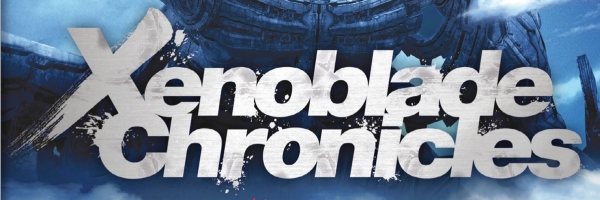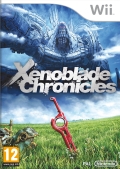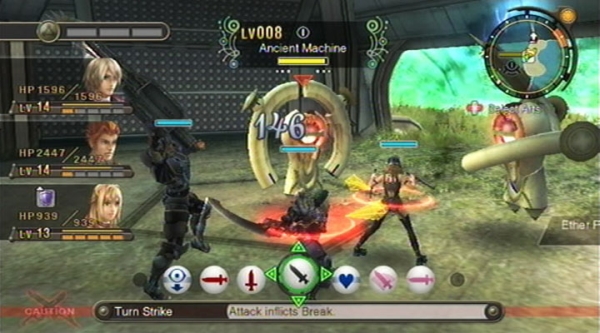
It was over. I knew as soon as I heard the bones snap. Halfway through an 11-month round the world trip, after witnessing Angkor Wat in Cambodia, scaling the Great Wall of China, bungie jumping and glacier hiking in New Zealand, I managed to break my tibia and fibula in Peru, one day into a four day trek along the Inca trail to the famous Machu Picchu. A five-hour bumpy taxi ride back to civilization. Five days awaiting surgery in a Cusco hospital bed. Then another two weeks lying there, in a country whose language I did not speak, before a 36-hour flight back home to Great Britain.
It is safe to say I needed to escape the depressing circumstance I found myself in. I needed to immerse myself in a world brimming with imagination.
It turns out I needed Xenoblade Chronicles.
Platforms: Wii
Publisher: Nintendo
Developer: Monolith Soft
Genre: Non-North American Action RPG
Release Date: August 19, 2011 (Europe)
PEGI Rating: 12
 I’ve never been a massive player of JRPGs, largely due to a lack of time I could invest in them. I flirted with Final Fantasy XIII, but found the plot confusing and the gameplay lacking, and gave up thirty hours in. But Xenoblade manages to keep you enveloped in its epic plot all the way to the rewarding ending by pacing itself and surprising you with the occasional twist. The story begins with two warring behemoths, the Bionis and the Mechonis, locked in battle. Bionis strikes a blow to Mechonis, but his nemesis returns the favour, driving his sword into Bionis. The two giants, suffering from their injuries, become lifeless, frozen, locked forever in battle. Over time, life evolved on the bodies of each God, and like the giants they lived upon, they engaged one another in battle. Our hero, Shulk, is one of the Homs of Bionis, spending his time with his army friend Reyn while studying the famed sword, the Monado, in the hope of unlocking its powers. When the Mechon attack, Shulk is forced to fight, but with the loss of Fiora, a girl he adores, Shulk sets out on a journey from the foot of Bionis to its head, across the sword of Mechnois and into its heart, on a quest to end the Mechon once and for all.
I’ve never been a massive player of JRPGs, largely due to a lack of time I could invest in them. I flirted with Final Fantasy XIII, but found the plot confusing and the gameplay lacking, and gave up thirty hours in. But Xenoblade manages to keep you enveloped in its epic plot all the way to the rewarding ending by pacing itself and surprising you with the occasional twist. The story begins with two warring behemoths, the Bionis and the Mechonis, locked in battle. Bionis strikes a blow to Mechonis, but his nemesis returns the favour, driving his sword into Bionis. The two giants, suffering from their injuries, become lifeless, frozen, locked forever in battle. Over time, life evolved on the bodies of each God, and like the giants they lived upon, they engaged one another in battle. Our hero, Shulk, is one of the Homs of Bionis, spending his time with his army friend Reyn while studying the famed sword, the Monado, in the hope of unlocking its powers. When the Mechon attack, Shulk is forced to fight, but with the loss of Fiora, a girl he adores, Shulk sets out on a journey from the foot of Bionis to its head, across the sword of Mechnois and into its heart, on a quest to end the Mechon once and for all.
Despite being a JRPG, the game does not rely on bulky cut scenes to tell its story. Instead, Monolith Soft has crafted an open world that evokes a sense of freedom more akin to Fallout or Grand Theft Auto: from the Great Plains of the Bionis Leg, through the breathtaking Makna Forest, to the floating city of Alcamoth above the crystal clear Eryth Sea. Each area is populated with a plethora of imaginative creatures to fight and people to aid, with four hundred plus side quests. The game also employs both time and weather to give the player an added sense of discovering a new world; for example, certain characters you need to talk to will only appear at certain times of the day, or creatures you are required to slay will only appear in the right weather conditions. While you can change the time, the weather remains more elusive, and mildly frustrating.
Of course no action RPG would be complete without a complex battle system to wrangle with, but it improves upon Final Fantasy’s Active Time Battle in several ways. My biggest frustration there was that if a creature touched you, you were then thrown into a battle and had to wait for the battle screen to load up. In Xenoblade, there is no cutting to and from a battle screen. If you are wandering the plains and attack a creature, your Talent Art inventory will appear immediately on screen. Also, rather than a turn-based system, you can attack at will, although each Talent Art takes time to recharge. Characters are not frozen to the spot either; they can manoeuvre around a creature, and many of the Talent Arts inflict greater damage if striking from a specific angle, i.e. from the side or rear. Your battle party can consist of up to three characters, and while you only control one, you can instruct the others with tactics throughout the battle. Later, when Shulk has mastered one power of the Monado, he has visions of future attacks, and during a small window of time you can tell the characters which specific Talent Art to use. For example, if in a vision you see Reyn is going to die, you can then tell Sharla to give Reyn more life energy before the attack occurs, saving his bulky behind.

The characters themselves are the key to Xenoblade Chronicles. As you go further into the game, your ranks swell to a maximum of seven playable characters, and each of them (with perhaps the exception of the Nopon hero Riki) has a dense story that arcs and twists its way through the entire course of the game, as do the relationships between the characters themselves. As a nice added touch, the localised language version features a variety of British accents, although Reyn’s heavy cockney (provided by actor Jay Taylor) does raise the occasional smirk. There are however moments where it seems the script has been completely lost in translation.
But Xenoblade Chronicles goes beyond the usual remit of a JRPG, bringing in elements of other games. Once you reach Colony 6, you will then be able to help rebuild it, similar to rebuilding Monteriggioni in Assassin’s Creed II, by collecting the right combination of items. There are more weapons here than in Borderlands, and more collectibles, clothing and armour than you can shake a stick at. Also, there are Achievements similar to those found in Xbox 360 games, rather than the ‘token’ Achievements we have seen in the likes of Metroid Prime 3: Corruption or Wii Sports Resort. It helps keep you invigorated through the long haul, as well as an extra motivation to explore every nook and cranny of the game.
And now to address the white elephant (or White Eduardo) in the room: the fact that the game is on the Wii. The developers have thankfully opted not to use motion controls, instead relying on just the buttons of the Wii Remote/Nunchuk combo or a Classic Controller. A wise move given that 120 hours of wrist flicking would probably have equated to another broken limb. Everything is fully customisable, right down to the speed of the subtitle scroll. But then there are the graphics to consider. While not in HD, it is perhaps the prettiest Wii game out with Nintendo’s first party titles, and given the sheer scope, it only illustrates how lazy developers have been to push the graphical capabilities of the little white box. There were moments when I stopped playing just to admire the view of the hulking Mechnois from Bionis at sunset, complemented by an incredible orchestral score. Why Nintendo chose not to release this in North America is as astonishing as it is disappointing.
In the end, director Tetsuya Takahashi and writers Yuichiro Takeda and Yurie Hattori have managed to craft a world both unusual and yet familiar, allowing us to accompany Shulk and his band of heroes as they travel across two worlds, dealing with Gods and monsters alike. We share in their accomplishments and wallow in their grief. Xenoblade Chronicles is not just a game; it is an experience you will miss when it is finally over. It manages to raise questions about our own beliefs and spirituality as well as about the role of machines in our lives, and all while, offering up one of the greatest game playing experiences of this generation.

Review Disclosure: A retail copy of Xenoblade Chronicles was purchased by Warp Zoned for the purposes of this review.







